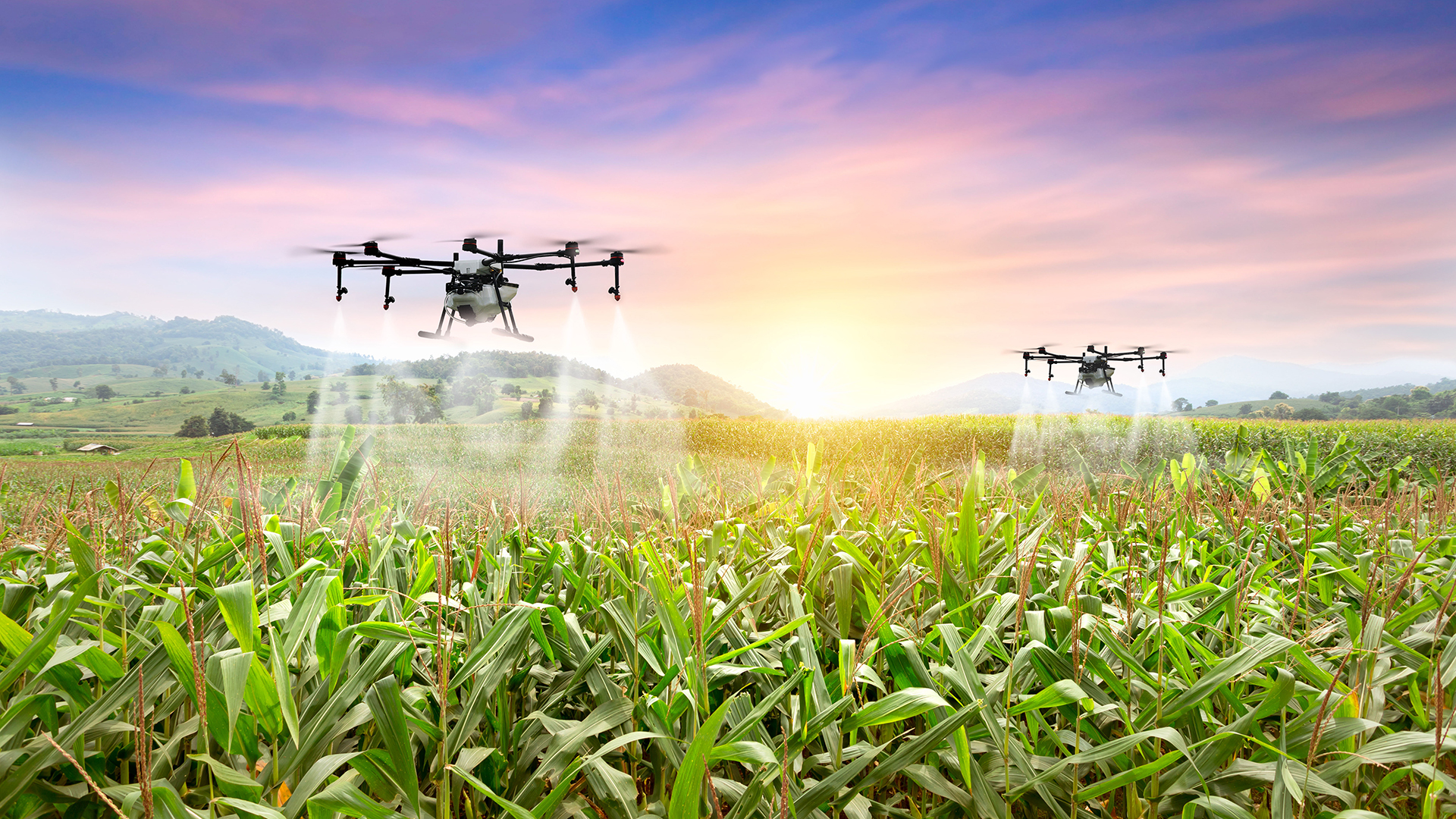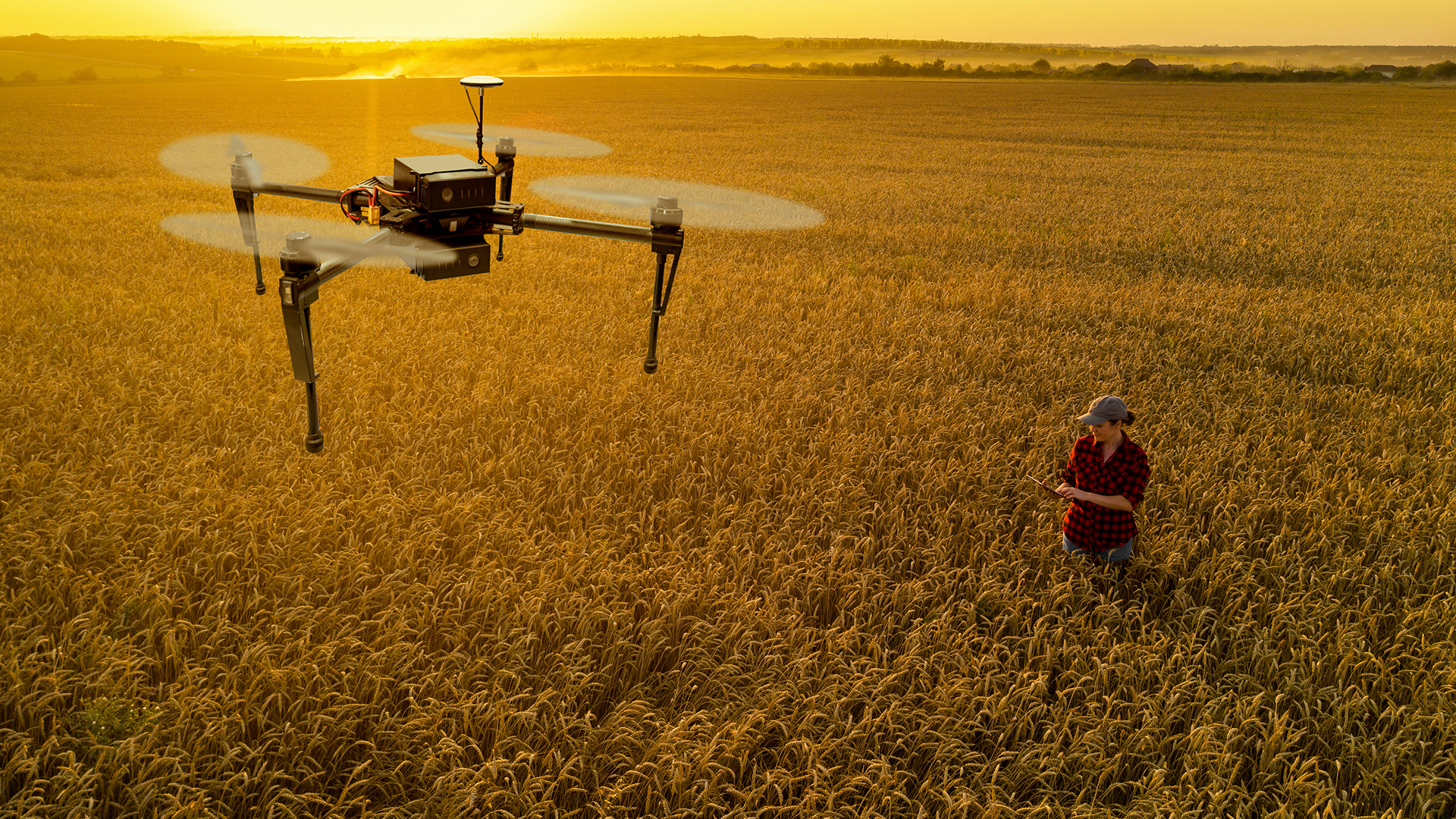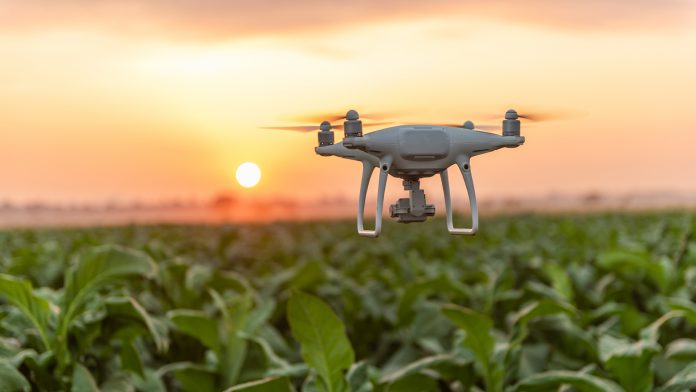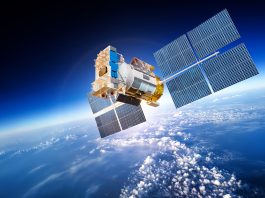The advent of technology in agriculture, specifically agriculture drones, has ushered in a new era of efficiency and productivity.
Despite the prevailing scepticism surrounding their effectiveness, recent studies underscore the significant role that drones play in enhancing agricultural outcomes.
The increasing reliance on drones is attributed to their ability to minimise production expenses and optimise farm yields by reducing cultivation losses and limiting wheeled vehicle passes across farmlands.
An intriguing aspect emerging from this analysis is that despite ranking second in production costs among evaluated technologies, the overall economic benefits of using drones surpass those derived from other methods, such as self-propelled sprayers.
What are agriculture drones?
Emerging as a promising technological innovation on the horizon of agricultural advancement, agriculture drones are akin to silent guardians in the sky, poised to revolutionise traditional farming methods by potentially increasing production efficiency and reducing costs.
These unmanned aerial vehicles (UAVs) have diverse applications in agriculture, ranging from crop monitoring and disease detection to efficient pesticide application.
The role of these drones is not limited to just surveillance; their integration with other farming technologies can increase crop yields significantly by enabling precision agriculture techniques that optimise the use of resources.
Agricultural drones can be equipped with various sensors and imaging capabilities that provide detailed insights about crop health, soil conditions, irrigation needs, and pest infestations.
Their impact on crop yields has been significant due to their ability to identify areas of stress in crops at an early stage, thereby enabling timely intervention.

Furthermore, they offer efficiency in pesticide application by precisely targeting affected areas, thus minimising wastage and limiting exposure of non-targeted plants and soil. This aspect also contributes towards environmentally friendly farming practices.
In the broader context of precision agriculture—a system that uses technology for accurate decision-making—agricultural drones play a pivotal role by providing high-resolution data that is integrated with other information systems for comprehensive analysis and informed decisions on-farm management strategies.
Benefits of agricultural drones
Agriculture drones provide a significant impact on crop yields, primarily through their ability to reduce cultivation losses and increase the spraying rate.
Agricultural drones can precisely monitor crop growth patterns and swiftly detect any potential issues, such as disease outbreaks or pest infestations. This level of precision leads to rapid intervention, thus reducing losses that would otherwise lower the overall yield.
Furthermore, drones have proven to be economically efficient when compared to traditional farming methods, such as the use of trailed sprayers or self-propelled sprayers.
The decrease in production costs is largely due to their ability to operate without human interaction once programmed with a flight path. Additionally, they cause less soil compaction than wheeled vehicles, thereby cutting down on loss from trampling crops during spraying procedures.
Despite taking second place in terms of initial production costs when compared to other technological options, the economic effect of using agriculture drones outweighs this factor due to its substantial contribution towards increased crop yields and reduced trampling losses. Thus manifesting an unparalleled benefit over conventional agricultural practices.
Comparison with other technologies
A comparative analysis between traditional practices and technologically advanced methods in modern farming reveals noteworthy insights into their respective economic impacts.
The utilisation of drones in agriculture, for instance, has been identified as a significant contributor to increased efficiency and productivity.
Notably, despite having the second highest production cost among these options, agricultural drones yield the greatest economic effect due to decreased spraying rates and losses from trampling.
Advantages include:
- The use of drones reduces the number of passes made by wheeled vehicles across fields during the growing season, which decreases soil compaction and lessens environmental damage;
- Drones can perform tasks ranging from crop monitoring to spraying with minimal human intervention, reducing labour requirements;
- Drones are capable of delivering precise amounts of fertilisers or pesticides where needed, thereby optimising resource usage and preventing wastage;
- Drones can be seamlessly integrated into existing farming operations without disrupting current practices while enhancing overall productivity; and
- Despite its benefits, integrating drone technology into agriculture faces regulatory challenges that need to be addressed for widespread adoption. However, the high economic output yielded by drone use underscores their essential role in modern agricultural practices.
Cost-effectiveness of agriculture drones
Despite the scepticism surrounding their initial costs, agricultural UAVs present an economic paradox; they demand higher production expenditures yet deliver superior financial returns due to minimised operating costs and enhanced crop yields.
The impact on crop yields is substantial as drones allow for precise, targeted application of fertilisers and pesticides, reducing losses during cultivation and limiting the number of passes wheeled vehicles make across fields during the growing season.
This not only reduces trampling but also lowers fuel consumption, contributing to significant reductions in production costs.

While these benefits are impressive, it’s important to acknowledge potential limitations and challenges associated with drone technology in agriculture. These may include regulatory hurdles, technical complexities, privacy concerns or simply the need for farmers’ acceptance and adoption of this new technology.
Despite these factors, many farmers recognise the long-term environmental benefits, such as reduced water usage and less chemical runoff into nearby water bodies, which contribute towards sustainable farming practices.
Overall, while agricultural drones might require higher capital investments initially, their use tends to result in greater economic efficiency over time once adopted fully by farmers.
Future prospects
Looking towards the future, it is anticipated that agriculture drones will continue to revolutionise farming practices by enabling precision agriculture and contributing significantly to sustainability.
The potential challenges associated with using drones in agriculture include legal and regulatory issues, privacy concerns, and technological limitations. However, advancements in technology are expected to overcome these challenges over time.
The impact of agricultural drones on the environment is another critical issue that needs further investigation. While the use of drones can reduce emissions from traditional farm machinery, there may still be environmental implications due to their construction and disposal.
The market demand for agricultural drones is projected to increase in the coming years due to growing awareness among farmers about their benefits and supportive policies from governments worldwide.
Nevertheless, a robust regulatory framework must be put in place to ensure safe operations and mitigate any adverse impacts on society or the environment.
As technology evolves at an unprecedented pace, it becomes necessary for regulations and industry standards to keep up with these changes.










